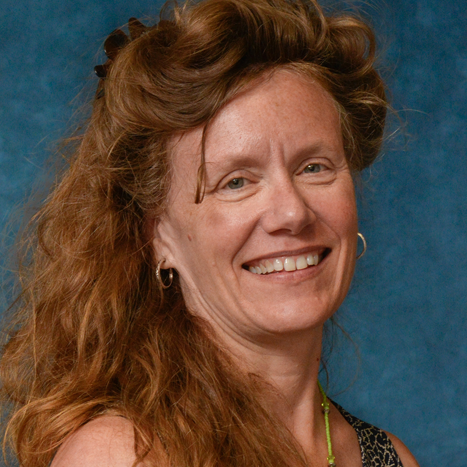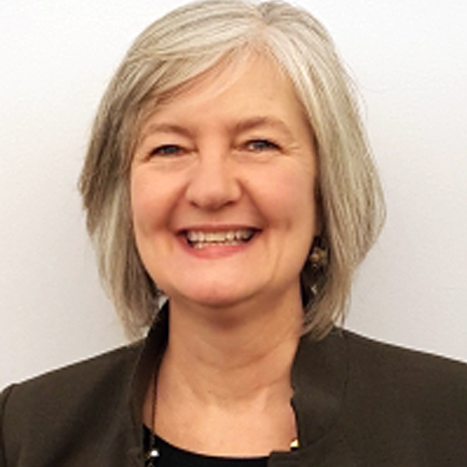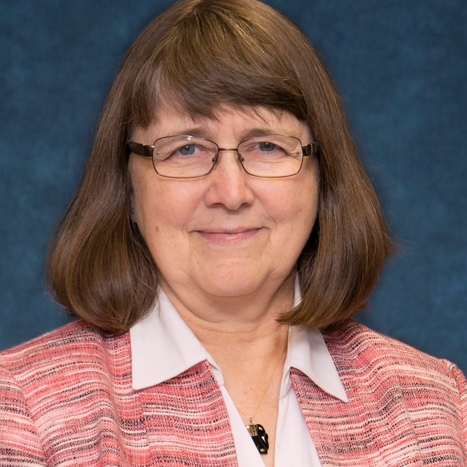Perspective: PACE is the Place—An Overview of Highlights and Expert Insights on Expanding a High-Performing Program and Model of Care
August 12, 2021
Anne Montgomery
Sarah Slocum
Joanne Lynn
Many parts of the U.S. long-term services and supports (LTSS) system are broken—at the exact moment that the need is at an all-time high. At the same time, public interest in the model of care known as the Program of All-Inclusive Care for the Elderly (PACE) has never been higher. These dualities—along with policy barriers and solutions—drove a lively series of moderated discussions with multiple perspectives offered by more than two dozen experts, stakeholders, and policymakers convening for a July 14th seminar hosted by Altarum’s Center for Eldercare Improvement (CEI) and the National PACE Association (NPA).
“As many of you know—and I don’t think you would be on here if you didn’t know—we’ve got a long-term care crisis in this country,” Congresswoman Debbie Dingell (D-MI) remarked at the opening of the seminar. She emphasized the chronic ills of the fractured U.S. health care system —poor coordination between medical providers and social services organizations, and a lack of agility to quickly shift financial resources to provide what individuals need when their needs change— causes many families to break down. When she was supporting her late husband, former Rep. John Dingell, “there were days that I would just be reduced to tears and just hit my head again the wall, I’ll be honest,” she said. By comparison, PACE services are organized “all in one place: companionship and support, and so many other things, from coordinated health care services to transportation.” And that, other presenters agreed, is what a comprehensive system that includes long-term care should be like. “I’m going to work my tail off,” Rep. Dingell promised attendees, to help create better jobs for care workers, to expand PACE to new states and to “make sure strong quality standards for services are maintained as PACE continues to grow in the coming years.”
Necessity Sparks Innovation and Growth within PACE
In a panel moderated by NPA’s Peter Fitzgerald, PACE leaders reflected on some of the changes and innovations that Covid-19 has sparked in their programs. Because PACE has infrastructure and the ability to adapt, they made a variety of adaptive and creative shifts, including:
- Repurposing the center for medical care for use as an infirmary and for family respite;
- Repurposing vans for transporting participants to offer services as mobile clinics; and
- Delivering many more services to participants in their homes.
The pandemic “pushed us to use our telehealth more aggressively,” On Lok’s Grace Li noted. It also led to thinking more deeply about “how can we maximize the center base location” and “push the boundaries a little bit more—let’s say 10 or 20 percent of participants don’t always have to come into the center,” thus allowing a program to potentially increase enrollment without building additional center space.
Connie Benton Wolfe of PACE of Northeast Indiana, which has just opened, noted that her program is set to grow swiftly because it is already firmly grounded in community services funded under the Older Americans Act and Medicaid home and community-based services (HCBS). Together they are providing a ready source of referrals for the PACE program. “We’ve been able to generate 65 referrals that are in the pipeline,” she said, making PACE an “extension of a continuum that needs to be there for older adults and duals who are trying to remain as independent as possible.”
ArchCare’s Scott LaRue expanded on these themes, noting that while “the move to home and community-based services was well underway before the pandemic, “it taught people that you can provide high-acuity and high-quality care in the home, and the consumer is looking for that to happen.” A major impact of Covid-19, he said, was to accelerate the shift to HCBS “by at least 10 years.” ArchCare is actively “looking for opportunities to serve broader populations,” including a pilot to allow PACE to “reach the individuals who are Medicare eligible, but not yet Medicaid eligible, and get them enrolled into a PACE program—not dissimilar from what CMS has done with [Special Needs Plans] and other Medicare Advantage plans by allowing them to start covering some Medicaid-based services.”
The discussion from LaRue and Benton-Wolfe highlighted the multiple populations for whom PACE operations can expand and strengthen existing supports—which are both an opportunity and a challenge. With ongoing federal and philanthropic grants, Altarum has developed projects and expertise for nursing-home eligible populations, exploring the technical and operational opportunities for PACE organizations and for other models that aim to create a continuum of services options for dually-eligible beneficiaries.
San Diego-based St. Paul’s Senior Services’ Cheryl Wilson pointed to the role of federal and state waivers granted during the pandemic in improving the ability of PACE programs to adapt how and where they serve participants’ needs. The waivers, she explained, have allowed St. Paul’s to offer a broader-than-usual spectrum of services to participants in their homes—which has not only kept them safe from infection, but also improved their quality of life in some cases. If a participant is “very frail, very elderly,” she noted, “then the van trip is very laborious for them, and even getting up and getting showered and dressed is laborious. You know, sometimes we need to re-think, where do we serve those people?”
Rick Martin of Pennsylvania-based Geisinger, a major nonprofit health plan, related that, during the pandemic, “We closed down our day center for a number of months. We took care of people in their homes,” pivoting rapidly to telemedicine and experiencing only one death from Covid-19. Along with other seminar speakers, Dr. Martin advocated for a continuum of care that is designed to keep elders as healthy and independent as possible—which means keeping them mostly out of the hospital and the emergency room. Succeeding in this requires careful planning and population analytics, he noted, which Geisinger is undertaking to assess which program a given elder may be best suited for, and which is also cost-efficient.
Proper Evaluation and Expanded Policy will Bolster PACE’s Impact
Via video, Senator Bob Casey (D-PA) spoke proudly of the prominent role that PACE, or LIFE plans as they are known in Pennsylvania, play in HCBS service delivery. Today LIFE plans serve 7,900 older and disabled Pennsylvanians, he noted, and the record of success that the program has produced makes it ripe for expansion. Sen. Casey’s PACE Plus Act (S. 1162), introduced in April, proposes new funding for expanding PACE sites across the country and calls for the federal Department of Health and Human Services (HHS) to iterate the PACE model of care to serve many more older adults, including Medicare-only populations needing limited long-term services and supports (LTSS).
Rob Schreiber of Fallon Health in Massachusetts is looking at its populations in “upstream, midstream and downstream” categories, and aiming to shift individuals who with the right supports, can recover function to “push them back” into improved health. Fallon is the first commercial health insurer to operate a PACE plan and is looking closely at PACE’s effectiveness in quality and cost. PACE is particularly good at this—it “can hit and help multiple individuals,” he noted, “because we meet them where they are, we focus on what matters to them, and then we craft our care plans based on what it is that they really care about.” Mary Naber of PACE Southeast Michigan suggested that other health plans are beginning to appreciate the flexibilities offered by PACE. For 20 years her program, which is “primarily under a health system umbrella,” grew only slowly—but then took off in 2015. Today it serves more than 1,300 participants, growing even during Covid (by 3%). “The key,” Naber said, “is that if you’re going to grow, you’ve got to have the stamina to endure all of the changes that go with growth. You’ve got to have a team that’s willing to adapt, because what serves 500 people doesn’t serve 1,000 people. So, you’re constantly re-evaluating how you’re providing the care.”
The seminar’s panel of policy experts called for action to provide Medicare beneficiaries with the ability to purchase affordable Part D plans, and to provide the Federal Coordinated Health Care Office with clearer authority to shape technical assistance that accelerates and expands PACE, as well as other promising models of tightly integrated and organized care. On the Part D issue, Tim Huebner of Rep. Dingell’s office referenced bipartisan legislation that is designed to provide Medicare beneficiaries with the choice of an affordable Part D plan,[1] and Samantha Koehler of the Senate Special Committee on Aging observed that “PACE is often lumped in with Medicare Advantage, and the section of CMS that works on MA programs isn’t necessarily equipped to provide the technical assistance and services to PACE programs on the ground—because these programs really aren’t that similar.” As PACE develops and expands into Medicare-only and perhaps additional populations, Tim Engelhardt noted, now is an important time to consider “whether we have the right oversight mechanisms today and whether we will have the right ones five years from now as the market evolves.” He added that CMS is currently debating differing approaches: whether PACE’s capabilities as a “provider-driven but fully capitated, risk-bearing model” suggest that it should be only taken forward in its “purest form,” and/or whether innovations and adaptations that can be developed by forward-thinking PACE organizations should be encouraged to help create “new spaces for things that are PACE-like.”
Developments at the state level are also affecting PACE, and Joseph Billingsley noted that California’s PACE organizations are now operating in 22 of the state’s 58 counties. He suggested that PACE expansion into “unserved counties” and “underserved” urban areas would be a welcome development. MassHealth’s Daniel Cohen noted that Massachusetts is prioritizing growing enrollment in existing PACE programs, and like California, is taking a careful look at how the mechanics of PACE enrollment processes can be accelerated. Also being discussed, he said, are recruiting and marketing processes, and whether these can be shifted to allow PACE organizations greater scope to promote their services, on par with flexibilities offered to Medicare Advantage plans.
Concerning telehealth, both federal and state panelists agreed that waivers granted during the pandemic have been beneficial, and that the challenge now is to design consistent policy for multiple providers wishing to maximize telehealth use. Details of how that will be approached constitute “the multi-billion-dollar question of the day,” commented Rachel Dolin, professional staff member of the House Ways & Means Committee. Daniel Cohen argued that “there’s an opportunity here to modernize the way we ask for PACE waivers,” given that the current BIPA 903 PACE waiver process is cumbersome, requiring “each of our PACE programs to send individual applications for telehealth waiver continuation to the state to evaluate those, and then send all those individual waivers to CMS for them to be evaluated.” Instead, he suggested that states such as Massachusetts could be allowed to apply for “a blanket telehealth waiver to cover all of our programs in a standardized way,” so that PACE programs would be “be operating under the same telehealth structure rather than creating different and potentially unequal systems.”
The Future of PACE Builds on What Makes the Model Exceptional
The seminar closed on a decidedly upbeat theme focused on the question, “What will PACE look like in 10 years?”. Maria Zamora of the Center for Elders’ Independence in Oakland predicted that the center will remain the “heart of the model.” A center helps foster “that social bond [that] is part of what makes PACE a very special, very unique, very successful model,” she explained, “and a virtual environment cannot fully replace that. But it can supplement it.” She predicted that PACE could readily expand to serve “different populations,” and PACE expert Jade Gong concurred, observing that “if we were going to write PACE legislation today, or a model of care for a [population of older adults with disabilities], we would probably create something that looks like PACE, but our starting point would be a whole lot more flexible. We wouldn’t have the kind of administrative barriers we have, the different obstacles…and we’d be able to expand a lot faster.” For high-quality PACE services to be more widely available, Gong called for “some tweaks so that we can have some premium flexibility” and a regulatory approach that facilitates, rather than blocks, PACE providers from serving a pre-duals Medicare population. “We really do need some changes in CMS policy,” she concluded.
If this happens, Kyle Allen said, “we can continue to tweak the model to serve broader populations,” potentially including Medicare fee-for-service (FFS) beneficiaries. As these FFS beneficiaries develop complex needs spanning medical and long-term care, they would be well-served by having access to a core PACE strength: an interdisciplinary team that knows how to “modify [services] up and down according to the needs of the person.” Allen posited that if PACE policy were shifted “towards value-based purchasing and value-based care,” that this could energize FFS providers to want to participate in the comprehensive care framework that the PACE model of care inhabits. Green House Project’s Susan Ryan gave voice to the hope that “synergistic partnerships” can be formed to fuse the expertise of different types of providers—i.e., housing for seniors, workers and families with ready access to medical and social services— to create “real community living.”
“If there is a silver lining to Covid,” said Katherine Hayes of the Bipartisan Policy Center, “it has shown us and shown policymakers that they can really view PACE through a different lens— they can see a PACE organization as a home and community-based services provider now as well.” Indeed, the American Rescue Plan Act classifies PACE organizations as HCBS providers. The SCAN Foundation’s Gretchen Alkema urged stakeholders and policymakers to consider PACE as embodying a “Center of Excellence” for care coordination, and to use the program to “test out innovations that then can be diffused across the entire system of care,” such as using PACE organizations as a “test ground” for refining telehealth parameters, and for pushing “forward on diversity, equity, and inclusion.” Sonja Felton, executive director of the Huron Valley PACE program in Ypsilanti, Michigan, introduced their video that was featured at the seminar showing that “older people come from really different backgrounds,” she noted. “That’s the beauty of aging … it’s about who they are today, what’s important for them today, and putting that person-centered approach back into every aspect of healthcare.” While one would expect that PACE participants fared better than similar fee-for-service dual Medicare–Medicaid enrollees, Altarum is formally testing that hypothesis with support from AHRQ.
Looking back at PACE over 40 years, Jennie Chin Hansen called for PACE to embrace the care of individuals with dementia more fully, including providing greater support for a shrinking number of family caregivers, and for policymakers to export the tightly coordinated teamwork that is a hallmark of the PACE model to other parts of the health care system. Nora Super of the Milken Institute closed out the seminar with the observation that “the U.S. population that will need LTSS is growing, and we’re not addressing their needs. So my dream of 10 years from now is that we do have [PACE widely] available to all Medicare enrollees—so they can choose it as an option.”
[1] The House bill, “The PACE Part D Choice Act of 2021,” H.R.4941, was introduced on Friday, August 6, 2021, with Reps. Blumenauer, Walorski, Dingell and C. Smith.
Altarum is a nonprofit organization that works with federal and state agencies and foundations to design and implement solutions to improve the health of individuals with fewer financial resources and populations disenfranchised by the health care system. We achieve measurable results by combining our expertise in public health and health care delivery with technology, workforce training and continuing education, applied research, and technical assistance. Our innovative solutions lead to better health for beneficiaries and better value for payers.

Perspective

Anne Montgomery - MS
Program Director, Delivery System Transformation
Areas of Expertise- Long-Term Services and Supports
- Medicare, Medicaid, the Older Americans Act, and other programs
- Social Determinants of Health in Older Adults
Anne Montgomery develops policy and research initiatives that improve long-term services and supports and medical care for older adults receiving services from Medicare, Medicaid, the Older Americans Act, and other programs. She is co-leading efforts to implement and evaluate comprehensive culture change and quality improvement in nursing homes and is working with colleagues to develop a new volunteer-based Community Care Corps program at the national level. Anne conducts workforce policy analysis for home and community-based services (HCBS) and advises on how to expand models of community-based care for older adults requiring complex services.

Sarah Slocum - MA
Program Director, Delivery System Transformation
Areas of Expertise- Long-term Services and Supports
- Medicare
- Medicaid
As a leader working to transform services, Sarah strives to create innovations and system changes that will make care for frail elders and people with disabilities available, accessible, and high quality in the setting of their choice. Through nursing home quality improvement, PACE expansion, benefit flexibility, and culture change efforts, she aims to change care delivery to a person-centered model.

Joanne Lynn - MD
Analyst, Eldercare Improvement
Areas of Expertise- Eldercare and Advanced Illness
- Long-Term Services and Supports
- Medicare
Dr. Joanne Lynn is a former geriatrician and hospice physician who is an expert in creating and advancing new models to expand long-term services and supports (LTSS) to a greater share of the aging population. Joanne is the author of hundreds of journal articles and books on LTSS policy, including MediCaring Communities, a blueprint for setting up, delivering, and funding LTSS services nationwide.
